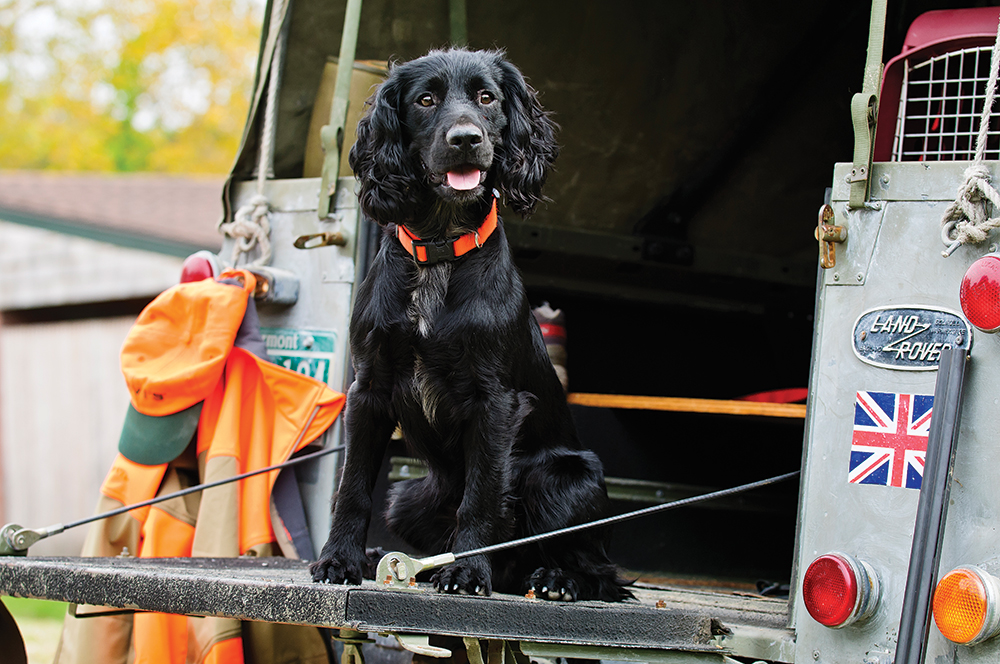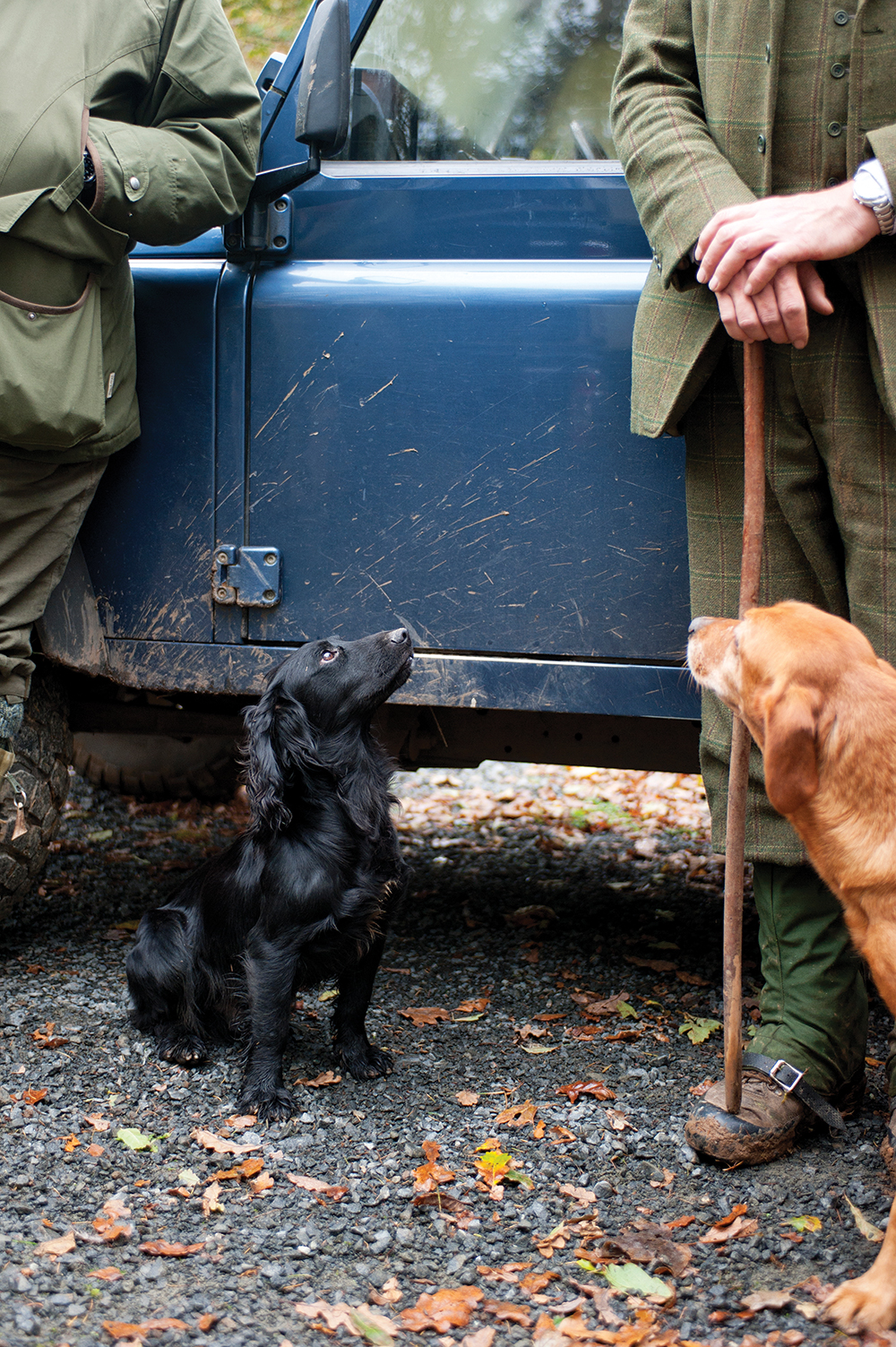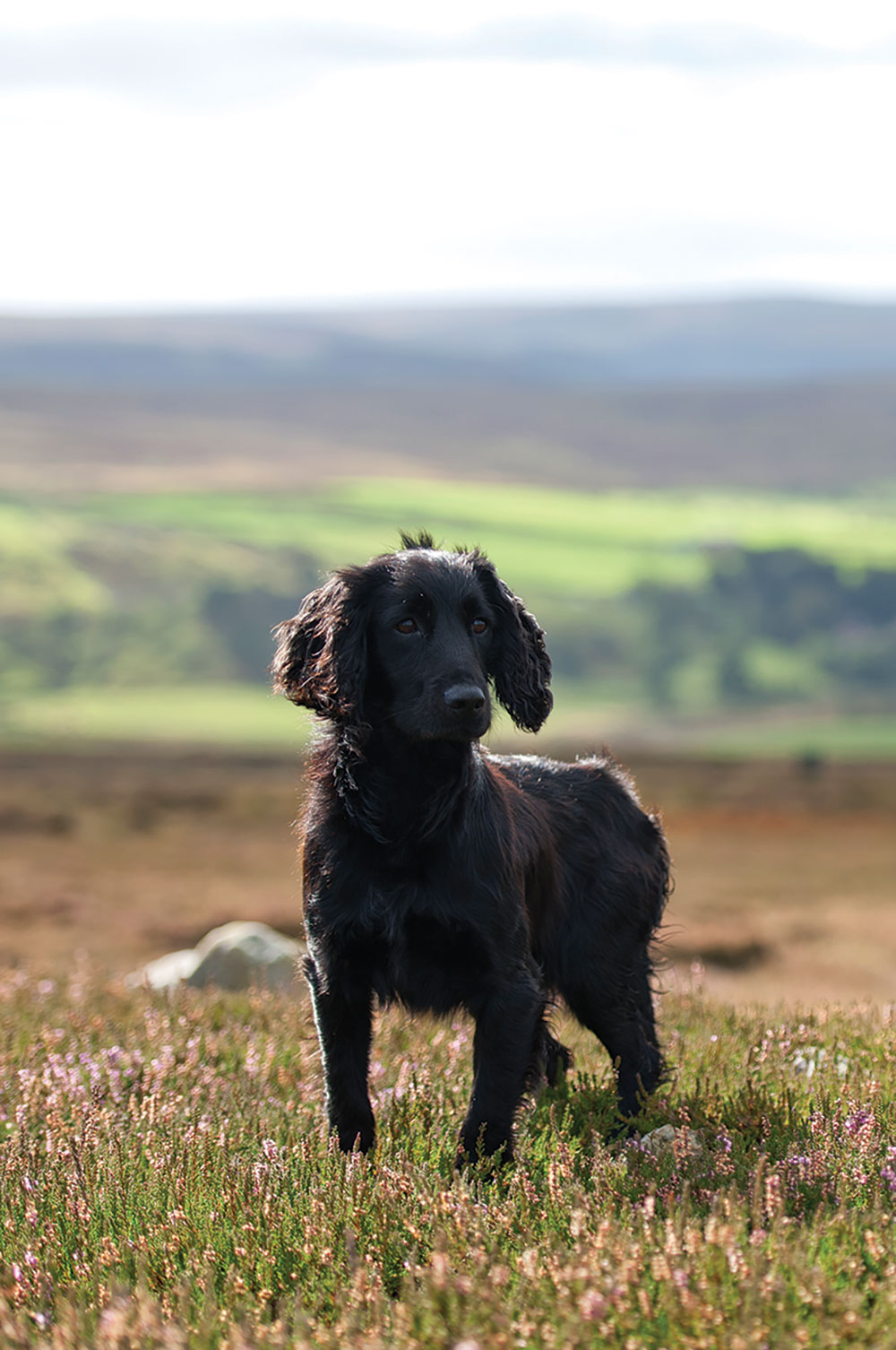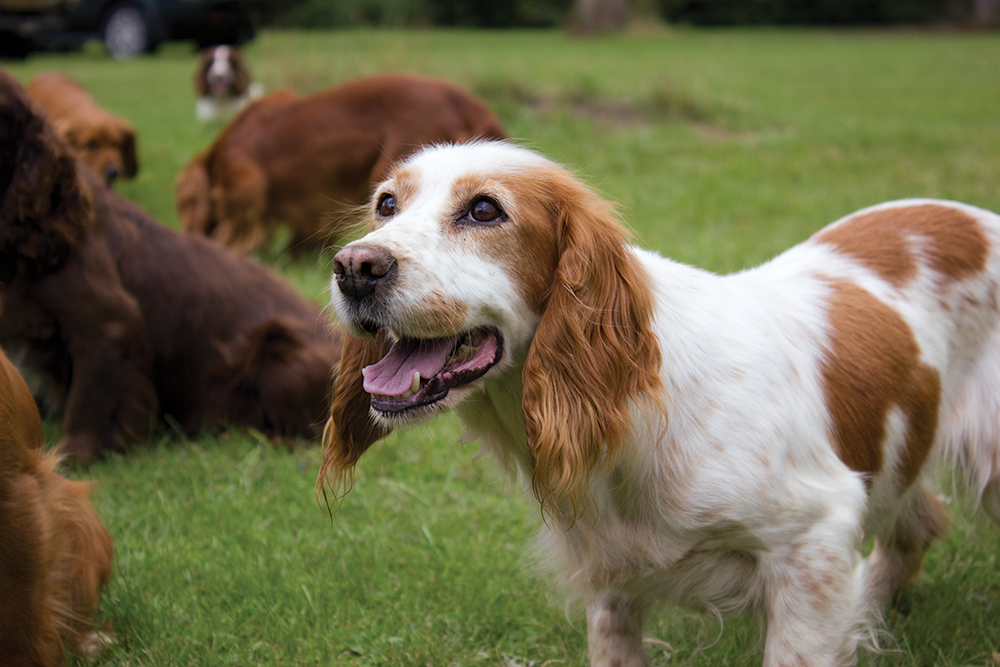The English Cocker: A Special Place in a Hunter’s Heart

English cocker spaniels hold a special place in my heart. Watching these handsome dogs hunt a field, quartering in their distinctive figure-eight pattern, is almost hypnotic. Like when you gaze into a log fire and do not want to look away. Though the diminutive cocker is not the only spaniel breed I have owned and trained, it is the breed I favor above all others due to its immeasurable love for both people and hunting.
With a lineage tracing back more than 500 years and even meriting a mention in Chaucer’s The Canterbury Tales, spaniels are not new to the hunting field. However, despite this heritage, the various classes of the spaniel were separated based simply on their weight until as late as 1885 when The Spaniel Club was formed. In 1893 the Kennel Club in the United Kingdom finally recognized distinct groups, including the larger springer spaniel named after its inclination to “spring” game, and the smaller cocker used to hunt tight coverts for woodcock, known as “cocking”.
As well as being bred to flush game from thick brush to waiting guns, cockers have always been prized for their ability to retrieve fallen birds, demonstrating sharp eyes, a keen nose, and a willful disregard for their own safety in pursuit of wounded game.

Today, cocker spaniels provide great variety to the hunting field due to both their never-give-up attitude and their array of colors, which include solid blacks, chocolates (also known as livers), reds, parti-colors, and roans. But there is more to the selection of cockers as hunting companions than novelty of coloration. These efficient and determined hunting dogs demonstrate a level of agility seldom seen in other breeds.
Cockers are smart and biddable, and thus comparatively easy to train. Certainly, these dogs respond better to praise than punishment. Indeed, when correction is required, a firm word is undoubtedly preferable to a hard hand.
The breed standard is a compact, sturdy, and personable dog, with males standing 15 to 17 inches at the shoulder and females around 14 to 16 inches. Cockers’ bodies are long and their legs short, relative to many hunting breeds, and their tails are docked to avoid damage while hunting. Male cockers weigh between 28 and 34 pounds, with females tipping the scales between 26 and 32 pounds. Coats are medium and can be straight or wavy. Feathering on the chest and hindquarters is common. I like to view this leg feathering as an unintentional but wonderful tip of the cap to the traditional stocking and garter flashes seen in British shooting attire. Unquestionably, cockers are bred purely for their working ability and not for their looks, as I believe they should be.


The English cocker spaniel offers much to the North American hunter; indeed, the cocker is a fine choice for many upland-bird species. Whether you hunt pheasant in the Dakotas, chase quail on Southern plantations, or follow grouse and partridge in the East or West, these dogs perform admirably as flushing and retrieving dogs for walked up game, or as polished retrievers to complement your favorite pointing dog. Cockers also enjoy water and prove skillful waterfowl companions and well as enthusiastic partners in the dove field.
For those who have never hunted over an English cocker, I can only advise that your hunting journey is not yet complete. I assure you, nothing will offer greater satisfaction than watching these little dogs give you their all in the field, and then return home to spend the evening curled at your feet.
While other breeds are lauded as faster or stronger, cockers offer a degree of precision rarely witnessed. Strength of mind over strength of body is perhaps the best way to view the approach of a cocker spaniel. If the setter is the gentleman hunter’s favorite dog, then perhaps the cocker is the hunting purist’s dog of choice—delivering a certain hunting élan.
Working cocker spaniels in the field accords an undeniable mystique, as intensity of action is interspersed with moments of humbling affection and extreme good humor. My cockers, Reuben and Mojo, and their son, Austin, undoubtedly forgive my misses and mistakes in the field, for their enthusiasm seldom wanes. Cockers are full of heart and are eager to prove themselves, time and again. These gallant underdogs punch above their weight class. Certainly, only a jaded soul would not to root for the English cocker—to me, these exceptional spaniels deliver hunting rapture.

Originally published in Volume 1, Number 6 (Oct-Nov 2013) of Covey Rise.
WANT TO RECEIVE STORIES LIKE THIS FIRST?
























